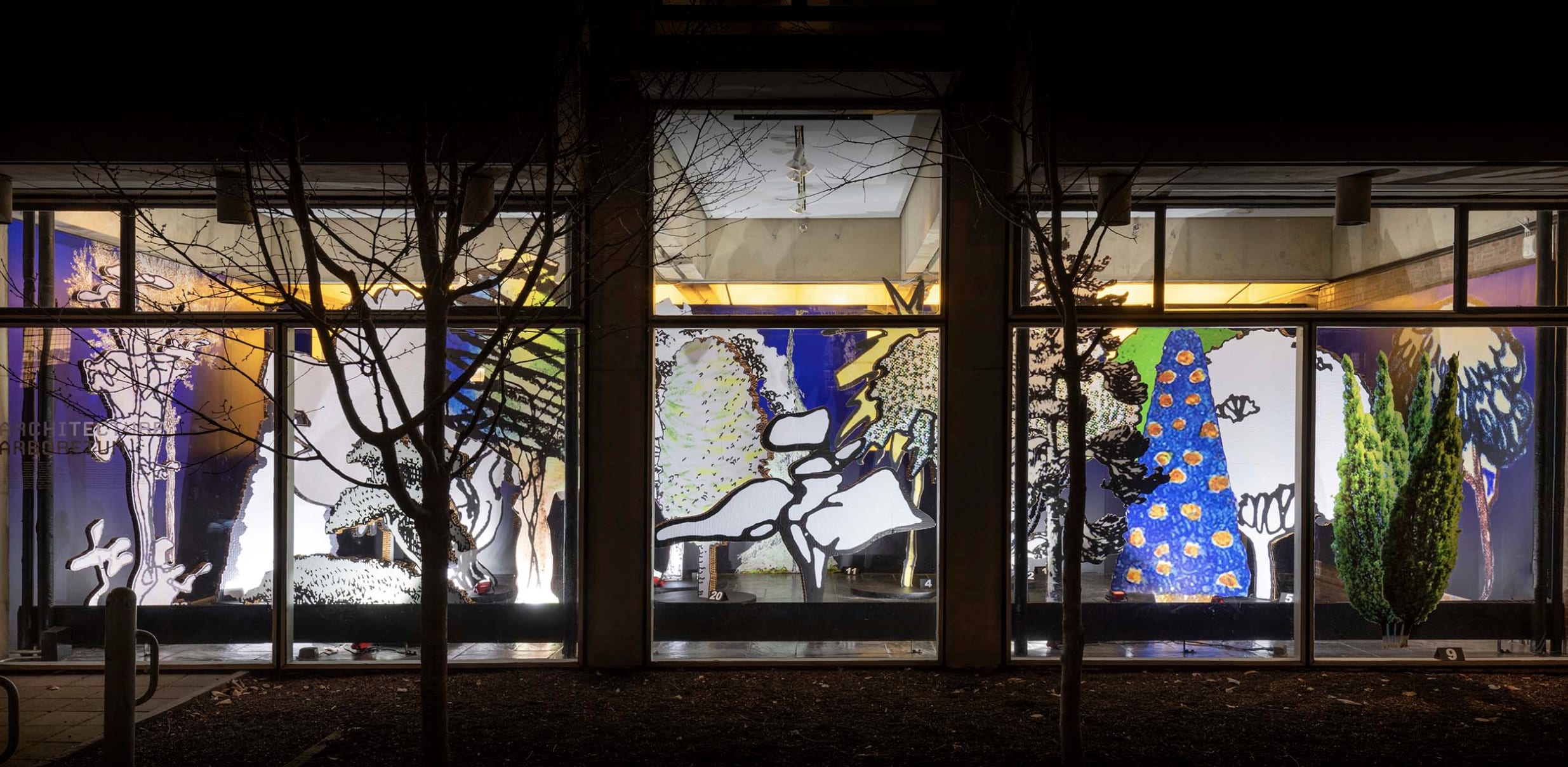Architecture Arboretum

4 November 2019 – 21 January 2020, Princeton University
Curated by Professor Sylvia Lavin
Modern architectural drawings contain a remarkable array of trees made with extraordinary precision and invention not explained by the need to record a site or the desire to animate a view. Although typically overlooked, trees in architectural drawings constitute an undiscovered arboretum containing evidence of important conceptual shifts in architectural thinking. Architects have interpolated trees into drawings as linguistic signs, used them as objects of scientific observation, and eventually seized upon them as things to be designed. Architecture Arboretum, however, also offers an opportunity to consider the reverse: arboreal thinking about architecture and the active role trees have played in the production of architectural drawings. The once unthinkable notion that trees are beings with interests of their own that process data about the world through distinct forms of representation has radicalized contemporary understandings of the environment. Architecture has more to learn from plant thinking than most disciplines, not only because architecture and trees share important features—the capacity to define space, produce climates, and shape the visual field—but also because trees perform architectural tasks in ways that care for the earth’s surface better than most buildings.

Drawing Matter loaned eight drawings for the exhibition, including works by Adolfo Natalini, Erik Gunnar Asplund, Aldo Rossi, Gabriel Pierre Martin Dumont, Le Corbusier, Quincy Archibald Jones & Frederick E. Emmons, Richard Neutra.
Read more on trees in architectural drawing in a series of four posts by Sylvia Lavin. Read about a machine learning project, a collaboration between Princeton, the Canadian Center for Architecture and Drawing Matter here.
